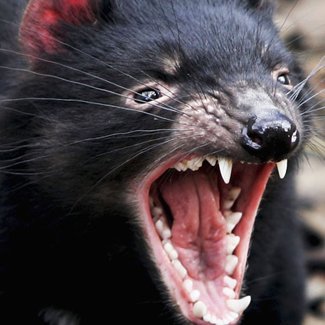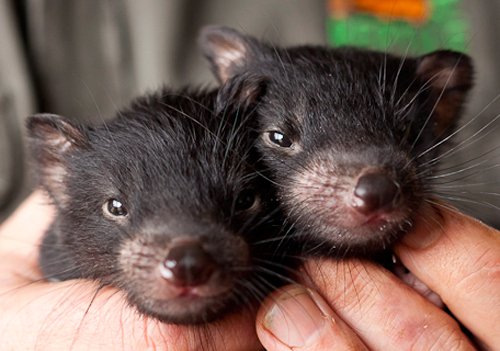Tasmanian devil cull won’t save the species

THE TASMANIAN DEVIL’S FUTURE is looking dimmer each day, as the species’ population has declined by 60 per cent due to a seemingly unmanageable facial tumour disease. If a solution is not found, they could be wiped out in 25 years.
Culling diseased animals has been one method proposed to help save the carnivorous marsupials, but new research reveals this may not help in this situation.
Scientists conducting culling trials between 2004 and 2010 in the Forestier Peninsula in Tasmania, found that this strategy was not effective in stopping the spread of Tasmanian Devil Facial Tumour Disease (DFTD).
Nick Beeton of the Univeristy of Tasmania and Professor Hamish McCallum of Griffith University tested models of more aggressive culling, but the tactic is still no match for the numbers of Tasmanian devils (Sarcophilus harrisii) affected by the disease, as infection rates soars.
“For all the models we used, we found the removal rate required to suppress disease was higher than that which would be feasible in the field,” said Nick. “Our models show that even for a trappable animal like the Tasmanian devil, catching enough of them to eradicate disease is a tall order.”
Saving the Tasmanian devil
The disease is spread when an infected devil bites another, a usual behaviour among the species, especially during mating season.
Efforts are now focused on saving the Tasmanian devil using different means. This includes establishing insurance populations, finding genetic resistance, and developing a vaccine.
The disease seems to be spreading less rapidly in devils living in north-western Tasmania. This population may have some genetic resistance to the disease that other populations have not formed and may offer a glimmer of hope on finding a genetic cure.
Devil insurance populations
Mainland Australia houses at least 200 disease-free devils in zoos in an insurance population program. The Taronga Zoo in Sydney has launched a breeding program for the devils in light of the declining population. Barrington Tops is another location where the devils are bred in a habitat similar Tasmania’s wilderness.

These baby Tasmanina devils are part of an insurance population
in the Barrinton Tops, NSW. (Credit: Andrew Gregory)
“It is important also to establish disease-free wild living populations on islands or in very large fenced landscapes,” said Nick. “Wild animals are more suitable for reintroduction to the Tasmanian mainland if needed.”
This need to keep the species in the wild is evident, as some populations of healthy devils are situated in large enclosures in Tasmania in hopes of creating as little disturbance to the natural processes as possible.
Nick Beeton and Hamish McCallum’s study was published in the British Ecological Society’s Journal of Applied Ecology.
RELATED STORIES

